
The second edition of the Smart Cities magazine conference took place in Brno
On Wednesday, June 3, 2015, the Smart Cities Magazine Conference took place at the Brno Observatory and Planetarium. It was an event of Central European significance, aimed at connecting the cities of the Czech Republic, Slovakia, Poland, Hungary, and Austria. The conference was patronized by Petr Vokřál, the mayor of the statutory city of Brno.
The second year of the Smart Cities Magazine Conference in Brno was attended by more than 130 participants - representatives from 23 cities across four European countries. The first block of the conference featured significant cities in the region, namely Vienna, Prague, Bratislava, and Brno. The block began with a presentation by František Kubeš, head of the Urban Policy Department at the Ministry for Regional Development of the Czech Republic, introducing the methodology of the smart city concept and envisioning its further development in the Czech Republic. Gustav Lebhart from the Department of Economy, Labour and Statistics of the City of Vienna informed the participants about the open data program, as did Jiří Čtyroký, the director of the Spatial Information Section of the Institute of Planning and Development of the City of Prague. Ingrid Konrad, the chief architect of Bratislava, presented the current state of smart concept development, while Jaroslav Kacer, chairman of the Smart City Commission of the City Council of Brno, reported on the conception of the Smart City agenda and introduced planned changes to internal processes in the city.
The second block of the conference was thematically divided into three areas - transport, data, and public space. In the area of transport, the mayor of Plzeň, Martin Zrzavecký, spoke about a smart card in public transport. On the topic of data, a guest from Leeds, UK, smart city solutions architect Ian Jones, presented the opening of data there. Beata Urbanowicz, the chief architect of Wrocław, opened the topic of public space with a presentation on local examples of public space modifications in recent years. Consultant Rudolf Bauer from Košice shared experiences related to the title of European Capital of Culture "two years later." In a contribution focused on "urban space as an opportunity," Smart Cities Magazine editor and architect Jaroslav Sedlák presented several examples of initiatives from both the bottom up and the top down, which have significantly transformed and cultivated public space in the broader context of the city through sensitive or minor interventions. At the end of the conference, the mayor of Brno, Petr Vokřál, presented his own vision for the development of a smart city.
The conference took place in the Brno Observatory and Planetarium, which underwent reconstruction a few years ago according to the design of the architectural office Rudiš-Rudiš. The technical and technological equipment of the lecture hall, known as the digitarium, allowed the graphic studio Pixl-e to complement the individual presentations with visually appealing large-scale projections across the spherical ceiling of the room.
The one-day conference in Brno was organized by Smart Cities Magazine, which is published quarterly in several thousand copies and is distributed for free to representatives of cities and municipalities in the Czech and Slovak Republics with populations over 5,000. It is available online to the public at www.scmagazine.cz.
The new issue of the magazine focuses on the theme of "Active Citizen."
The city is, by its very thought tradition and essence, an endless interaction between the municipality, its administration, and citizens, says Jan Urban in the magazine's introductory article. Communication technologies of the 21st century can significantly assist in this interaction, and the current issue presents a wide range of examples of how to engage citizens in co-decision-making about urban development (the article Guide from Poland), and how to meaningfully utilize their ideas, time, and energy. From the chaotic hustle of our ant colonies emerges the mysterious figure of the active citizen, who should not be an opponent of the city, but an attractive partner (I have suggestions). An active citizen can contribute to the development of the locality if given the opportunity (A city that builds itself). An example of a boundary figure is the Hungarian architect Šándor Finta, who decided to "cross to the other side" from his original position as an activist and became the city architect of Budapest. Discussions with him are offered in a regular Vision column. The position of city architect as an initiator of public relations is represented to municipal councilors in a new ČKA document, which regularly contributes its texts to the magazine.
A smart city builds on the removal of administrative barriers for faster implementation of innovations, which requires a significant reconsideration of our public procurement system, and a definitive abandonment of the "lowest price" model. The magazine addresses the topic of public procurement in two articles, one from the Czech Republic and the other from Slovakia. A smart city also relies on its openness, without which it is impossible to engage active citizens and innovative companies to help with the upcoming change. For the very first time in our region, an evaluation of the openness of 26 statutory cities in the Czech Republic was conducted, resulting in the first ranking of cities according to the methodology of the Ministry for Regional Development.
Thus, the magazine has progressed to its next phase, which, besides information, examples of good practice, and guides on Smart City, also provides valuable feedback to cities.
The second year of the Smart Cities Magazine Conference in Brno was attended by more than 130 participants - representatives from 23 cities across four European countries. The first block of the conference featured significant cities in the region, namely Vienna, Prague, Bratislava, and Brno. The block began with a presentation by František Kubeš, head of the Urban Policy Department at the Ministry for Regional Development of the Czech Republic, introducing the methodology of the smart city concept and envisioning its further development in the Czech Republic. Gustav Lebhart from the Department of Economy, Labour and Statistics of the City of Vienna informed the participants about the open data program, as did Jiří Čtyroký, the director of the Spatial Information Section of the Institute of Planning and Development of the City of Prague. Ingrid Konrad, the chief architect of Bratislava, presented the current state of smart concept development, while Jaroslav Kacer, chairman of the Smart City Commission of the City Council of Brno, reported on the conception of the Smart City agenda and introduced planned changes to internal processes in the city.
The second block of the conference was thematically divided into three areas - transport, data, and public space. In the area of transport, the mayor of Plzeň, Martin Zrzavecký, spoke about a smart card in public transport. On the topic of data, a guest from Leeds, UK, smart city solutions architect Ian Jones, presented the opening of data there. Beata Urbanowicz, the chief architect of Wrocław, opened the topic of public space with a presentation on local examples of public space modifications in recent years. Consultant Rudolf Bauer from Košice shared experiences related to the title of European Capital of Culture "two years later." In a contribution focused on "urban space as an opportunity," Smart Cities Magazine editor and architect Jaroslav Sedlák presented several examples of initiatives from both the bottom up and the top down, which have significantly transformed and cultivated public space in the broader context of the city through sensitive or minor interventions. At the end of the conference, the mayor of Brno, Petr Vokřál, presented his own vision for the development of a smart city.
The conference took place in the Brno Observatory and Planetarium, which underwent reconstruction a few years ago according to the design of the architectural office Rudiš-Rudiš. The technical and technological equipment of the lecture hall, known as the digitarium, allowed the graphic studio Pixl-e to complement the individual presentations with visually appealing large-scale projections across the spherical ceiling of the room.
The one-day conference in Brno was organized by Smart Cities Magazine, which is published quarterly in several thousand copies and is distributed for free to representatives of cities and municipalities in the Czech and Slovak Republics with populations over 5,000. It is available online to the public at www.scmagazine.cz.
The new issue of the magazine focuses on the theme of "Active Citizen."
The city is, by its very thought tradition and essence, an endless interaction between the municipality, its administration, and citizens, says Jan Urban in the magazine's introductory article. Communication technologies of the 21st century can significantly assist in this interaction, and the current issue presents a wide range of examples of how to engage citizens in co-decision-making about urban development (the article Guide from Poland), and how to meaningfully utilize their ideas, time, and energy. From the chaotic hustle of our ant colonies emerges the mysterious figure of the active citizen, who should not be an opponent of the city, but an attractive partner (I have suggestions). An active citizen can contribute to the development of the locality if given the opportunity (A city that builds itself). An example of a boundary figure is the Hungarian architect Šándor Finta, who decided to "cross to the other side" from his original position as an activist and became the city architect of Budapest. Discussions with him are offered in a regular Vision column. The position of city architect as an initiator of public relations is represented to municipal councilors in a new ČKA document, which regularly contributes its texts to the magazine.
A smart city builds on the removal of administrative barriers for faster implementation of innovations, which requires a significant reconsideration of our public procurement system, and a definitive abandonment of the "lowest price" model. The magazine addresses the topic of public procurement in two articles, one from the Czech Republic and the other from Slovakia. A smart city also relies on its openness, without which it is impossible to engage active citizens and innovative companies to help with the upcoming change. For the very first time in our region, an evaluation of the openness of 26 statutory cities in the Czech Republic was conducted, resulting in the first ranking of cities according to the methodology of the Ministry for Regional Development.
Thus, the magazine has progressed to its next phase, which, besides information, examples of good practice, and guides on Smart City, also provides valuable feedback to cities.
The English translation is powered by AI tool. Switch to Czech to view the original text source.
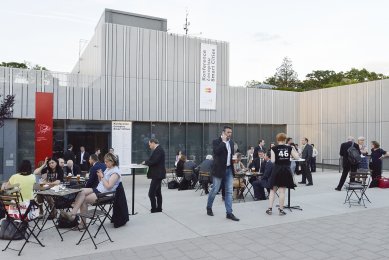
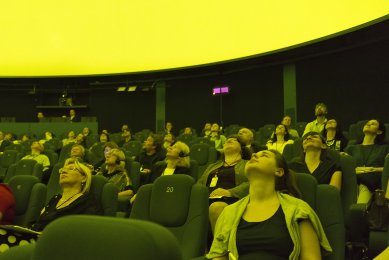
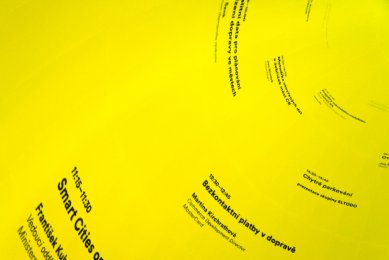
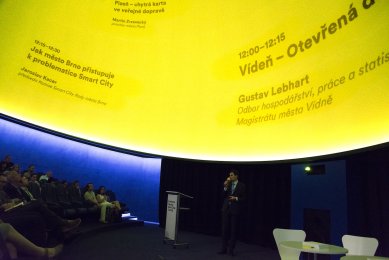
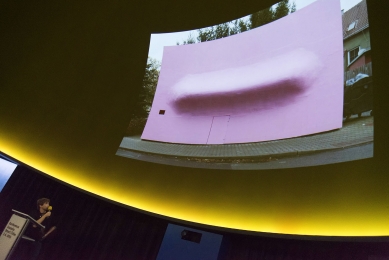
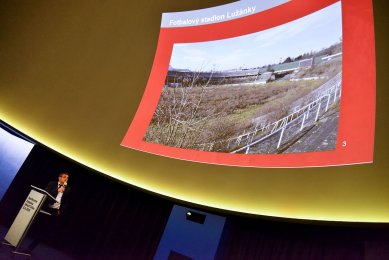
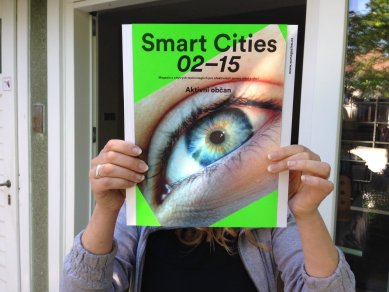
0 comments
add comment









